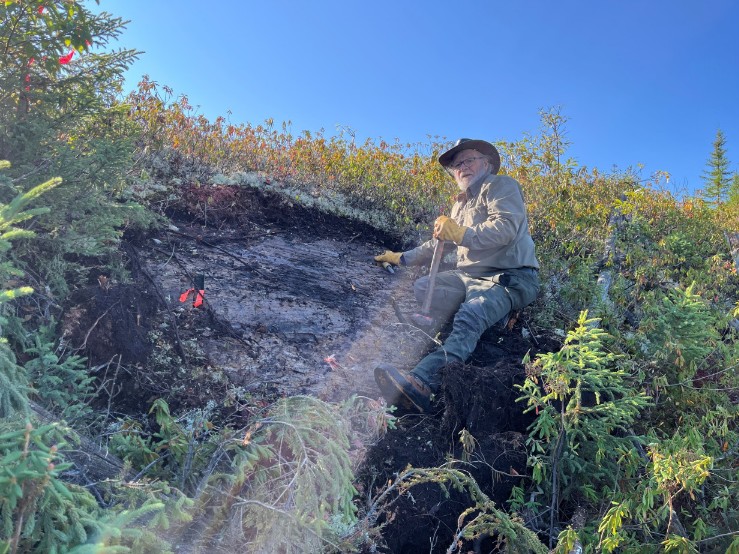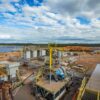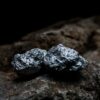Azimut Exploration Inc. (CVE: AZM) (OTCMKTS: AZMTF) has discovered high grades of antimony during its drilling campaign at the antimony-gold Fortinze Zone at its Wabamisk Property in the James Bay region of Quebec.
The company said on Thursday that its original plan was for 5,000 meters, but it expanded this in January. The program finished in late March after drilling 51 drill holes for 6,396 meters. The company intends to return in the summer for 10,000 meters of infill and expansion drilling.
Azimut’s recently finished drill program started in late 2024 as a follow-up on the Fortin Zone surface discovery.
Some highlights include:
- Hole WS25-40
1.10 per cent Sb, 0.38 g/t Au over 51.50 m (from 3.0 m to 54.5 m), including 3.43 per cent Sb, 2.37 g/t Au over 6.50 m (from 3.0 m to 9.5 m), and 2.41 per cent Sb, 0.18 g/t Au over 9.30 m (from 37.5 m to 46.8 m).
- Hole WS25-41
0.65 per cent Sb, 0.13 g/t Au over 42.75 m (from 20.0 m to 62.75 m), including 1.43 per cent Sb, 0.26 g/t over 10.55 m (from 52.20 m to 62.75 m)
- Hole WS24-06:
1.08 per cent Sb, 0.53 g/t Au over 22.70 m (from 78.5 m to 101.2 m), including 1.74 per cent Sb, 1.15 g/t Au over 9.50 m (from 79.5 m to 89.0 m)
Antimony is a silvery, brittle metalloid used in various industrial applications. It’s commonly alloyed with lead for batteries. Also, antimony strengthens metals and improves hardness. Additionally, it’s used in flame retardants for textiles and plastics. Antimony compounds also appear in ceramics, glass, and some pharmaceuticals, contributing to their functionality.
Read more: NevGold raises $5.5M for promising gold-antimony prospects in Nevada
Read more: NevGold closes its Nutmeg Mountain acquisition with Goldmining for $3 million
The price of antimony has reached USD$58K per tonne
Antimony and other critical minerals have been something of a global flashpoint of late.
Three countries produce about 90 per cent of the world’s estimated 100,000 tonnes of antimony in 2024—China accounts for 60 per cent, Tajikistan for 17 per cent, and Russia for 13 per cent. Canada and the United States do not currently mine antimony. In August 2024, China imposed export restrictions on antimony. As a result, Chinese exporters significantly reduced shipments in October, increasing the risk of supply disruptions and potentially driving prices higher.
Furthermore, the price of antimony has risen due to the ongoing supply shortages worsened by trade disputes. It’s reached approximately USD$58,000 per tonne in markets outside China.
Perpetua Resources has emerged as a key beneficiary of the U.S. Fast Track program. Its Stibnite Mine in Idaho holds one of the largest known antimony reserves in the United States. In 2023, the Department of Defense awarded Perpetua substantial funding to advance the project, citing national security concerns. The Stibnite project not only targets gold but also aims to re-establish a domestic antimony supply chain. Also, other Fast Track-supported firms are exploring advanced extraction technologies and forming partnerships to reduce reliance on China. The program’s momentum underscores growing geopolitical urgency around critical mineral independence.
Several junior mining companies are positioning themselves to meet rising demand for antimony and gold. NevGold Corp (CVE: NAU) (OTCMKTS: NAUFF) (FRA: 5E50) holds promising assets in Nevada, a jurisdiction aligned with U.S. strategic priorities. Also of note is Tectonic Metals (CVE: TECT) (OTCMKTS: TETOF), which is exploring mineral-rich zones in Alaska, including targets with antimony potential.
.
NevGold Corp is a sponsor of Mugglehead news coverage
.






